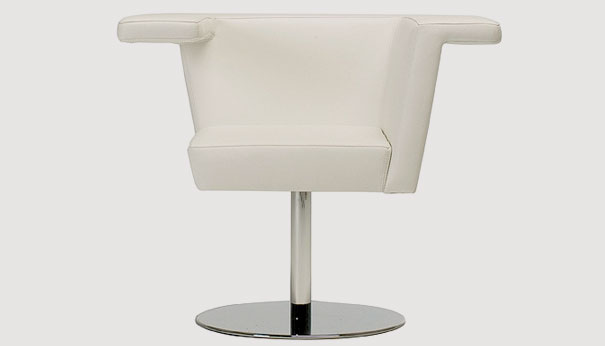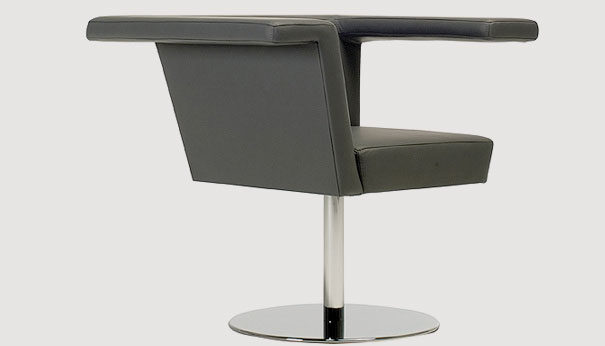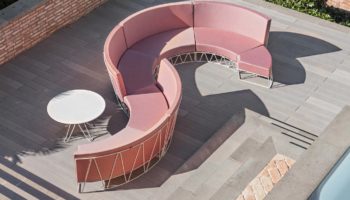Martin Ballendat Re-visits the Public Task Chair
I’ve got a soft spot for Martin Ballendat. Not only does he consistently create functional and aesthetically alluring designs that respond to the constant push for “solution-oriented” work, he’s also the author of one of my favorite public seating concepts–the Sculptural Chair (whose two-year anniversary is, coincidentally, tomorrow). Two parts Italian flair and one part German utilitarianism, this seminal piece gave a new look to public waiting areas everywhere, in addition to responding to the new realities of the fluid workspace. I’m pleased to say that Mr. Ballendat has improved on the concept with Alterno.
Alterno. Designed by Martin Ballendat.
Though the name Mr. Ballendat has chosen for this public seating coup may strike some as a bit silly (it reminds me of Transformer characters), none can deny its signification is spot on, for Alterno is not only an alternative to typical public seating, it quite literally alternates from one function to the next: If users inhabit the armchair in the traditional manner, it functions as a typical (if atypically comfortable) waiting chair; but if users require a more dynamic encounter with the piece, they merely need to execute a 90 degree turn, where they’ll find the chair’s arm doubles as a perfect resting space for their laptop. The signature feature that makes the conversion possible is the unorthodox two-sided design of the seat’s back–the cutout section to user’s left enables one to simply rotate, sliding the legs through and under the armrest, which action converts the chair to an impromptu desk.
Alterno, “a multifunctional armchair perfect for touchdown spaces and informal waiting areas,” has a severe, geometrical look that befits its functionality (as well as its name), though the high-end upholstery softens this aspect a bit. With a wide selection of coverings from either hand-made Lavalina leather or Züco textiles, users can’t help but feel pampered for the hour or so they’re likely to be wating and/or working. Lastly, the chair is equipped with an “auto-return” function that erases personalized adjustments, thus restoring the chair to its neutral default setting when the current user departs, leaving it ready and waiting for its next inhabitant. This perk, which doubtless forestalls the frustration I like to refer to as “automobile rear-view window syndrome,” has the additional advantage of “keeping the space neat and tidy at all times.”






Leave a Reply